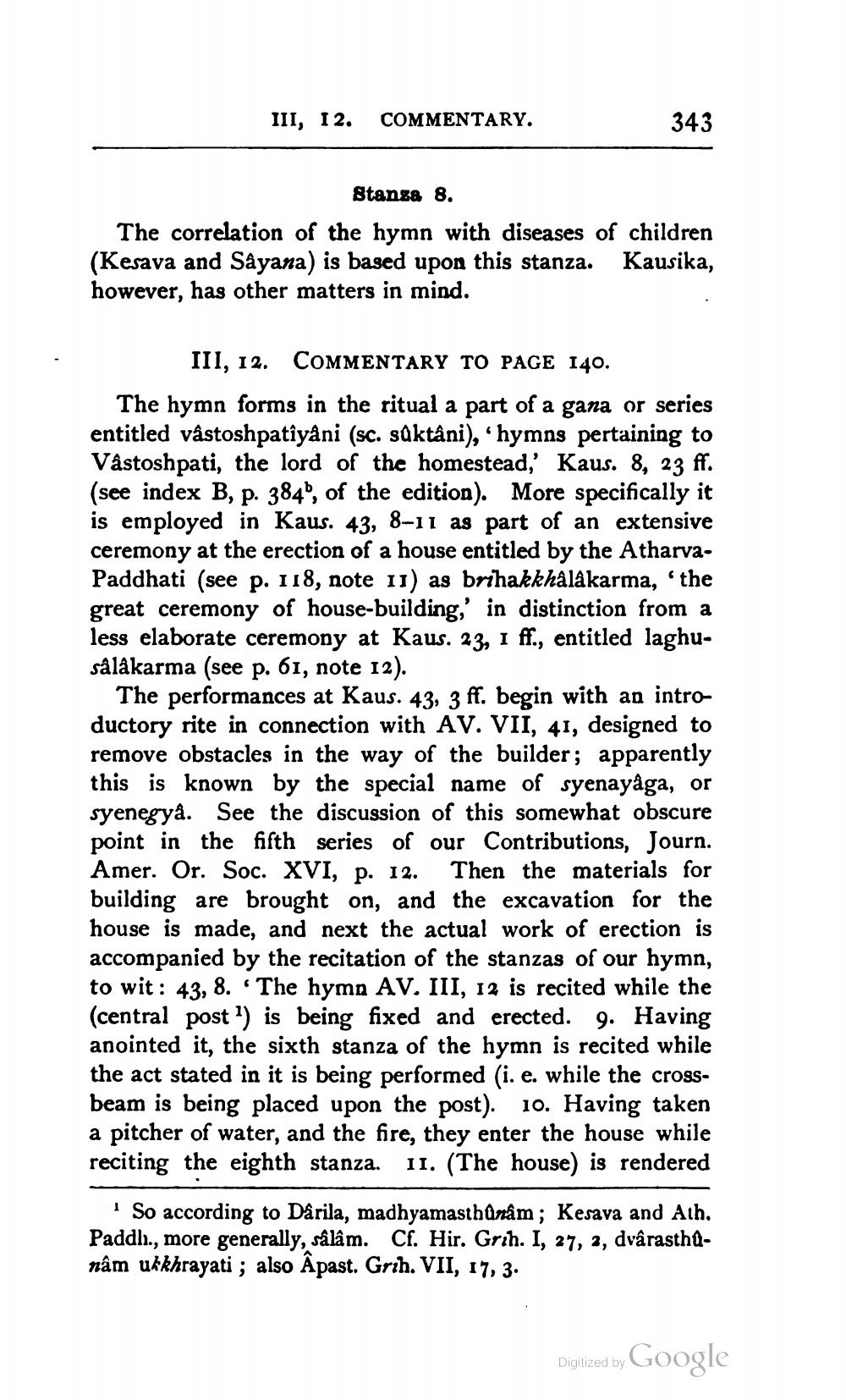________________
III, 12. COMMENTARY.
343
Stanza 8.
The correlation of the hymn with diseases of children (Kesava and Sâyana) is based upon this stanza. Kausika, however, has other matters in mind.
III, 12.
COMMENTARY TO PAGE 140.
The hymn forms in the ritual a part of a gana or series entitled vâstoshpatîyâni (sc. sûktâni), 'hymns pertaining to Vâstoshpati, the lord of the homestead,' Kaus. 8, 23 ff. (see index B, p. 384, of the edition). More specifically it is employed in Kaus. 43, 8-11 as part of an extensive ceremony at the erection of a house entitled by the AtharvaPaddhati (see p. 118, note 11) as brihakkhâlâkarma, 'the great ceremony of house-building,' in distinction from a less elaborate ceremony at Kaus. 23, 1 ff., entitled laghusâlâkarma (see p. 61, note 12).
The performances at Kaus. 43, 3 ff. begin with an introductory rite in connection with AV. VII, 41, designed to remove obstacles in the way of the builder; apparently this is known by the special name of syenayâga, or syenegyâ. See the discussion of this somewhat obscure point in the fifth series of our Contributions, Journ. Amer. Or. Soc. XVI, p. 12. Then the materials for building are brought on, and the excavation for the house is made, and next the actual work of erection is accompanied by the recitation of the stanzas of our hymn, to wit: 43, 8. The hymn AV. III, 12 is recited while the (central post1) is being fixed and erected. 9. Having anointed it, the sixth stanza of the hymn is recited while the act stated in it is being performed (i. e. while the crossbeam is being placed upon the post). 10. Having taken a pitcher of water, and the fire, they enter the house while reciting the eighth stanza. 11. (The house) is rendered
So according to Dârila, madhyamasthûnâm; Kesava and Ath. Paddl., more generally, sâlâm. Cf. Hir. Grih. I, 27, 2, dvârasthûnâm ukkhrayati; also Âpast. Grih. VII, 17, 3.
Digitized by
Google




